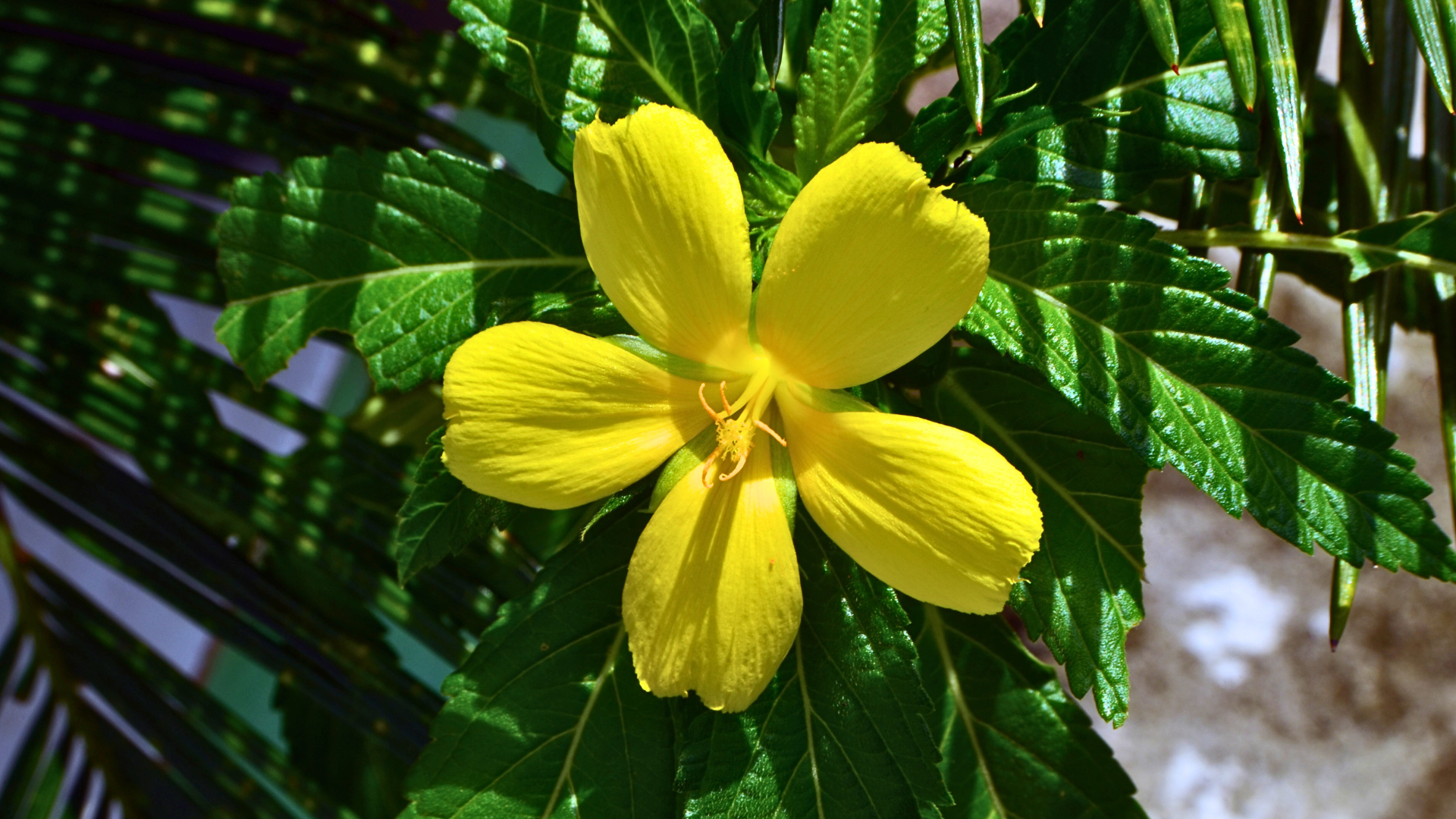Damiana (Turnera diffusa) is a small aromatic shrub in the Turneraceae family, native to Mexico, Central and South America, and the Caribbean, traditionally used for its uplifting and aphrodisiac qualities. It has a long history of use in folk medicine, particularly for supporting the reproductive, urinary, and nervous systems, making it a relevant herb for modern clinical practice—especially for clients experiencing anxiety, low libido, hormonal shifts, or emotional dysregulation.
In our practitioner membership community, Damiana was recently highlighted as our Herb of the Month due to its versatile and well-documented actions.
Historical & Cultural Context
Damiana has been used for centuries in Mexican and Central American healing traditions. Indigenous communities, including the Maya and Aztec, prepared Damiana as a tea or infused liqueur to enhance sexual vitality, mood, and emotional resilience [1]. The plant was frequently used in rituals and ceremonies dedicated to fertility and love, and its reputation as an aphrodisiac was so prominent that Damiana liqueur became a traditional wedding gift in some regions, particularly after the Spanish colonization. It was also considered a digestive and genitourinary tonic.
The plant’s Venusian associations-linking it to love, sensuality, and harmony-reflect both its historical use to enhance intimacy and its traditional reputation for balancing emotional and reproductive health, especially in women [2].
Pharmacological Actions
Damiana is classified as a:
- Mild nervine: Calms the nervous system and uplifts mood, particularly when related to tension, anxiety, or hormonal imbalance [3].
- Aphrodisiac: Improves libido, particularly when low desire stems from stress, fatigue, or burnout [4].
- Tonic: Supports the tone and function of the reproductive and urinary tracts [5].
- Mild stimulant: Enhances alertness without the jitteriness of caffeine.
Some preliminary studies suggest that Damiana may exert monoamine oxidase (MAO) inhibition, contributing to its mood-enhancing effects, and has shown mild antimicrobial and anti-inflammatory activity [6].
Energetics and Doctrine of Signatures
Energetically, Damiana is warming, drying, and slightly aromatic. It is best suited for individuals with cold, damp, or stagnant presentations—those experiencing emotional flatness, pelvic congestion, or creative blocks.
From a doctrine of signatures perspective, its yellow five-petaled flowers resemble those of Hypericum perforatum (St. John’s Wort), suggesting a similar nervous system affinity [7]. The plant grows in sunlit, arid environments, mirroring its ability to stimulate warmth, clarity, and flow, supporting the solar plexus and sacral chakra.
Preparations & Dosage
Damiana can be administered in several forms:
- Infusion: 1–2 teaspoons (approx. 2–4 g) dried leaf per cup of hot water, steeped for 10–15 minutes, taken up to 3x daily.
- Tincture: 2–4 mL, 2–3x/day.
- Capsules: 400–800 mg standardized extract, depending on formulation.
- Smoking blends: Sometimes included in ceremonial blends with other calming and smokable herbs like mullein, rose, or lavender.
Traditionally, Damiana has also been infused in wine or brandy as a sensual elixir.
Clinical Considerations
Damiana is generally well-tolerated but should be used cautiously in individuals with liver or kidney conditions due to limited safety data at high doses. It may mildly increase urinary output and should be monitored in patients with frequent urination or dehydration.
Contraindications are minimal, but practitioners should remain cautious with use during pregnancy or in combination with pharmaceutical antidepressants or anxiolytics until further data is available.
If you’re a health professional seeking to integrate clinical herbalism into your practice or want support in deepening your knowledge of herbs like Damiana, we invite you to explore our membership offerings.
Book a Complimentary Tea chat to learn more about joining our practitioner community or partnering in educational initiatives.
References:
- Türkan, Mina. 2019. “Herbal Medicine.” Www.Academia.Edu, April. https://www.academia.edu/38731193/Herbal_Medicine.
- Yakoot, Mostafa, Amel Salem, and Abdel-Mohsen Omar. 2011. “Effectiveness of a Herbal Formula in Women With Menopausal Syndrome.” Forschende Komplementärmedizin / Research in Complementary Medicine 18 (5): 264–68. https://doi.org/10.1159/000333430.
- Anti-anxiety Activity Studies of Various Extracts of Turnera Aphrodisiaca Ward. 2005. PubMed. 2005. https://pubmed.ncbi.nlm.nih.gov/16635964/.
- Estrada-Reyes, R., P. Ortiz-López, J. Gutiérrez-Ortíz, and L. Martínez-Mota. 2009. “Turnera Diffusa Wild (Turneraceae) Recovers Sexual Behavior in Sexually Exhausted Males.” Journal of Ethnopharmacology 123 (3): 423–29. https://doi.org/10.1016/j.jep.2009.03.032.
- Chaudhuri. “Proposed Interaction Mechanism between Medicine and the Diseased Cell in Diluted Homoeopathic Medicine.” Indian Journal of Research in Homoeopathy 14, no. 1 (2020): 17–24. https://www.ijrh.org/cgi/viewcontent.cgi?article=1810&context=journal.
- Chaurasiya, Narayan D., Jianping Zhao, Pankaj Pandey, Robert J. Doerksen, Ilias Muhammad, and Babu L. Tekwani. 2019. “Selective Inhibition of Human Monoamine Oxidase B by Acacetin 7-Methyl Ether Isolated From Turnera Diffusa (Damiana).” Molecules 24 (4): 810. https://doi.org/10.3390/molecules24040810.
- Klemow, Kenneth M., Andrew Bartlow, Justin Crawford, Neil Kocher, Jay Shah, and Michael Ritsick. 2011. “Medical Attributes of St. John’s Wort (Hypericum Perforatum).” Herbal Medicine – NCBI Bookshelf. 2011. https://www.ncbi.nlm.nih.gov/books/NBK92750/.


